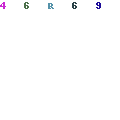France speaks on crusades, warfare
Students at SIUE had the opportunity to see an accomplished historian on Friday, March 23. John France, professor of crusader, medieval, and military history at Swansea University, and currently guest lecturing at West Point Academy.
Katie Sjursen, assistant professor of historical studies, stated that France’s talk was co-sponsored by the departments of anthropology, English language and literature, historical studies, political science, and the College of Arts and Sciences, as well as the ROTC.
“Professor France works on the history of warfare and crusading. His work has been funded by the British Academy, the Leverhulme Trust, and the Lawrence of Arabia Trust., again, some very fun names. And, he has undertaken field work in a variety of countries: Italy, France, Syria, Jordan, Israel, and Lebanon. He has innumerable publications. I’m only going to mention the most recent one, ‘Perilous Glory: The Rise of Western Military Power.’”
Sjursen said that she was at a conference speaking to a colleague about the use of carts in military provisioning. The colleague said that if she wanted to know anything about the topic, she should speak with France.
“He turns to me and said, “You know, if you really want to know anything about this, you should read to Dr. France. He’s the one who knows all the details about this period and the military,” said Sjursen.
France spoke to nearly 30 students about the warfare of the crusades. He talk, entitled “A Clash of Contrasts: Warfare in the Eastern Mediterranean in the Age of the Crusades,” examined how the armies of the crusaders and Turkish muslims fought and adapted to each other’s various style of war.
France’s talk covered the time period from 1095 to 1291, and focused mainly on the tactical style of war, along with changes in the style of fortifications. France stated that the Turks style of warfare was new to the crusades.
“‘Stunned and almost dead and with many wounded, we immediately fled and there was no wonder, for such warfare was new to us all,’” quoted France from an original source. “And that’s the bit you need to underline. For such warfare, the warfare of light horsemen, horse archers in fact, was new to us all. In fact, the army was very lucky to survive.”
France went on to talk about how the formation that the crusading army was the result of a very disjointed, non-standing army. He said the crusades was a composite of bits and pieces of armies from all over western Europe that were not used to fighting with each other.
“The crusades are incoherent forces. They are naturally incoherent forces coming from the west, and they were doubly incoherent because of the range of people within them who didn’t know one another and had distrust for one another and dislike one another,” said France.
France’s talk included a number of primary source material and pictures of the various forms and advancements of the fortresses. He said the crusades relied on mostly Roman fortifications.
“There is a different group than the history book tells. After 1099, western settlers settled in the holy lands. They drew on the experience of the first crusade and war for them was very different. They were in a very hostile environment where diplomacy was used more but warfare was endemic and battle frequently essential. The crusader states, as we call them, rested on fortresses, mostly fortified cities,” said France. “The settlers developed highly sophisticated fortifications.”
France took questions from the audience following his talk.
Filed Under: Anthropology • English Language & Lit • General CAS Stories • Historical Studies • News • Political Science













